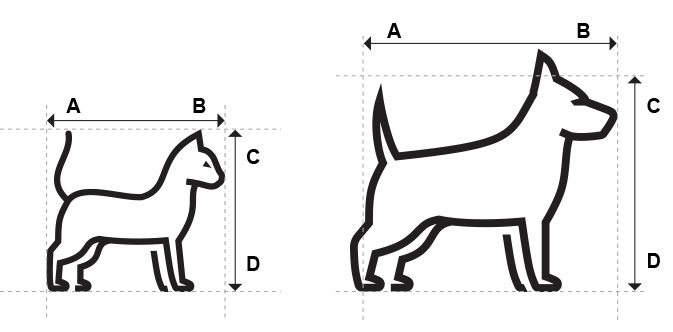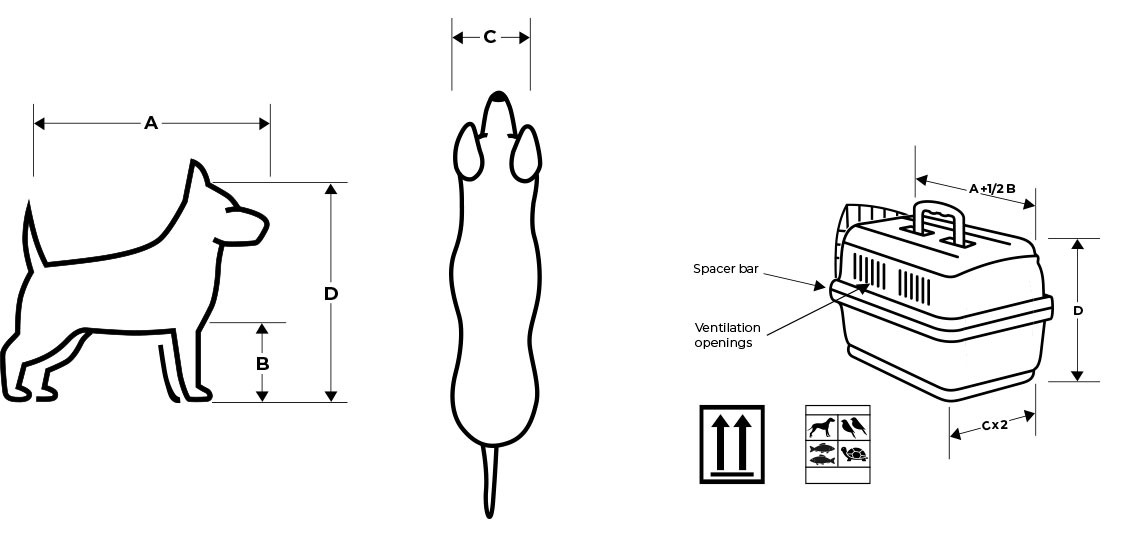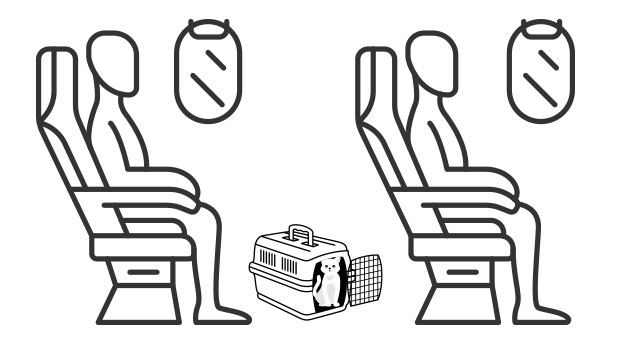Pet Carriers for Pet Air Travel
Oftentimes when we think of traveling with our pet(s), we manage to perfectly imagine the explorations, the new experiences and the fun, but we blissfully forget the journey that is inevitable to take place to get from one place to another. This vast in-between includes finding a pet friendly flight of course, collecting all the documents required by the airline and making arrangements for an airline approved safe and comfortable travel for your favorite baby. The first step for which is finding a suitable carrier for your pet. International Air Transport Association(IATA) has laid down a few guidelines for the same. Most airlines can and do modify these guidelines based on the specifics of their aircraft.
Here are a few pointers to make a note of keeping in line with IATA regulations -

Pet's Size and Weight
Most airlines accommodate only small cats, dogs and household birds in the cabin. Other pets that do not fit in the criteria of in-cabin travel are transported as checked baggage or in hold. Though very few flights have the provision for that at the moment. Pet friendly cargo holds are well ventilated, temperature and light controlled areas ensuring your pet is as comfortable as possible during the journey.

Suitable Airline Approved Carrier for your Pet
Most airlines have a limit to the number of pets in the cabin of a single flight which is usually up to 4. And will allow only 1 pet along with 1 carrier per passenger on board. The exception to this is small puppies or kittens of the same breed who can travel together in one airline approved carrier. There are various considerations for choosing an appropriate carrier for your pet.
The first consideration being that your pet should feel perfectly comfortable while inside the carrier. What comfortable means here, is that the carrier should be big enough so that your pet is able to sit, stand, turn around, stretch and lie down without any obstruction.

The second consideration is that of the airline. In the cabin, the airline permits small dogs and cats so that they can fit under the seat without occupying extra space on the aisle. That means that the carrier should be small enough to fit smoothly under the seat in front of you. Every airline will have different dimensions and provisions for the same so make sure that you check exact measurements and weight restrictions with them before investing in the carrier. Different measurements will apply in case your pet is not eligible to travel in-cabin and instead will be transported through cargo or checked baggage.

In-Cabin Carrier Features
The carrier should be leak proof with extra pads added on the inside to absorb accidents. It should be well ventilated from at least two sides. Mesh ventilation is ideal as the pet should not be able to stick any body part out of the carrier. The in-cabin carriers can be either hard sided or soft sided. This will vary depending on the airlines but an approximate maximum size of the in-cabin carrier should be somewhere around 18″ L x 14″ W x 9″ H.
Cargo and Checked Bag Carrier Features
The carrier that is going to be used to transport pets through cargo or as checked baggage must be hard sided made of either metal or wood with a solid roof and an absorbent bedding. Metal is always preferred since many airlines may not accept wooden carriers. It should be ventilated from three to four sides. These carriers must have food and water containers on the inside which are accessible for refill without opening the securely closed metal door. This will vary depending on the airlines but an approximate maximum size of the cargo carrier should be somewhere around 40” L x 27” W x 30” H.

Last but not the least, the carrier must be appropriately labeled as “LIVE ANIMAL” with the pet parents details and other important information like the pet’s name and feeding guidelines.
For a detailed information on the requirements of different airlines, check out our airlines’ pet policy pages.